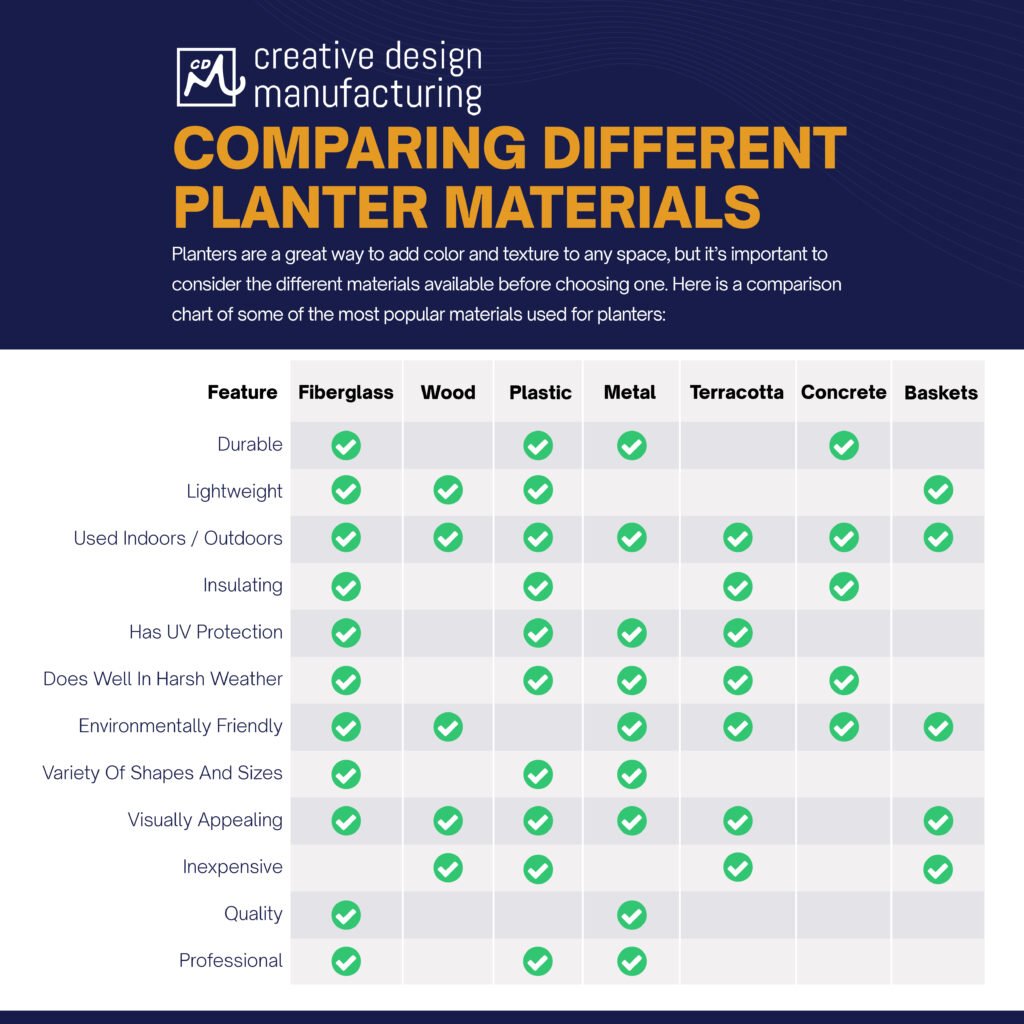Introduction
Garden pots are essential tools for gardeners, providing a controlled environment for plants to thrive. Knowing what garden pots are made of helps you select the right pot based on durability, aesthetics, and plant needs. This article explores the most common materials used in garden pots, their advantages, and how to choose the best pot for your gardening goals.
Common Materials Garden Pots Are Made Of
Garden pots come in a variety of materials, each offering unique benefits and challenges. Understanding these options ensures better plant health and garden aesthetics.
1. Terracotta Pots
Terracotta is a classic material made from natural clay. These pots are porous, allowing air and moisture to pass through, which benefits many plants.
- Advantages: Breathability helps prevent root rot; natural earthy look enhances garden aesthetics.
- Disadvantages: Fragile and prone to cracking in freezing temperatures; heavier than plastic.
2. Plastic Pots
Plastic pots are lightweight, affordable, and widely available in various shapes and sizes.
- Advantages: Durable, inexpensive, and retain moisture well.
- Disadvantages: Poor breathability can lead to overwatering; less environmentally friendly.
3. Ceramic and Glazed Pots
Ceramic pots often feature a decorative glaze, making them popular for indoor and patio gardening.
- Advantages: Attractive finishes; good moisture retention.
- Disadvantages: Can be heavy and fragile; glazed surface may limit breathability.
4. Metal Pots
Metal pots like aluminum or galvanized steel offer a modern look and high durability.
- Advantages: Long-lasting and sturdy.
- Disadvantages: Can heat up quickly in sun, potentially harming roots; may rust if not treated.
5. Wooden Pots
Wooden garden pots provide a natural aesthetic and good insulation for roots.
- Advantages: Eco-friendly and visually appealing.
- Disadvantages: May rot over time if untreated; requires maintenance.
How Material Affects Plant Health and Maintenance
The material of your garden pot directly impacts watering needs, root aeration, and overall plant health.
- Breathability: Materials like terracotta allow air exchange, reducing root diseases.
- Moisture Retention: Plastic and glazed pots retain water longer, suitable for plants needing consistent moisture.
- Temperature Regulation: Wood and ceramic insulate roots from temperature swings better than metal.
Tips for Maintenance Based on Material
- Terracotta pots benefit from soaking before planting to prevent rapid water loss.
- Plastic pots require monitoring to avoid waterlogging.
- Metal pots should be painted or coated to prevent rust.
- Wooden pots need sealing or treatment to prolong life.
Environmental Impact and Sustainability Considerations
As gardening grows in popularity, choosing sustainable garden pots is important.
- Eco-Friendly Options: Terracotta and wood are biodegradable and often made from natural materials.
- Recycled Materials: Some plastic pots are now made from recycled plastics, reducing waste.
- Durability vs. Waste: Durable pots like metal reduce replacement frequency but may have higher production impacts.
Experts recommend balancing durability with environmental footprint when selecting pots.
Choosing the Right Garden Pot for Your Needs
Selecting the right pot depends on plant type, location, and personal preference.
- Consider Plant Needs: Succulents prefer porous pots like terracotta; tropical plants may thrive in moisture-retentive plastic.
- Location: Outdoor pots need to withstand weather; indoor pots can focus more on appearance.
- Size and Drainage: Ensure adequate drainage holes and pot size to support healthy root growth.
Expert Insight
Gardening professional Lisa Green notes, “Choosing the right pot material can significantly impact plant health, especially in container gardening where root environment is controlled. Knowing the pros and cons of each material helps gardeners avoid common pitfalls like root rot or heat stress.”
Conclusion
Garden pots made of various materials offer different benefits, from breathability to durability and aesthetics. Terracotta, plastic, ceramic, metal, and wood each serve unique purposes depending on your plants and environment. By understanding these materials, their maintenance needs, and environmental impact, you can make informed choices that promote healthy plant growth and beautiful garden spaces. Reflect on your plant needs and gardening style to select the ideal garden pot material that harmonizes function with sustainability.
